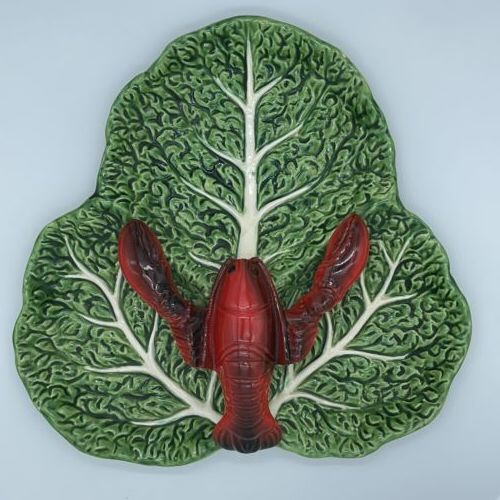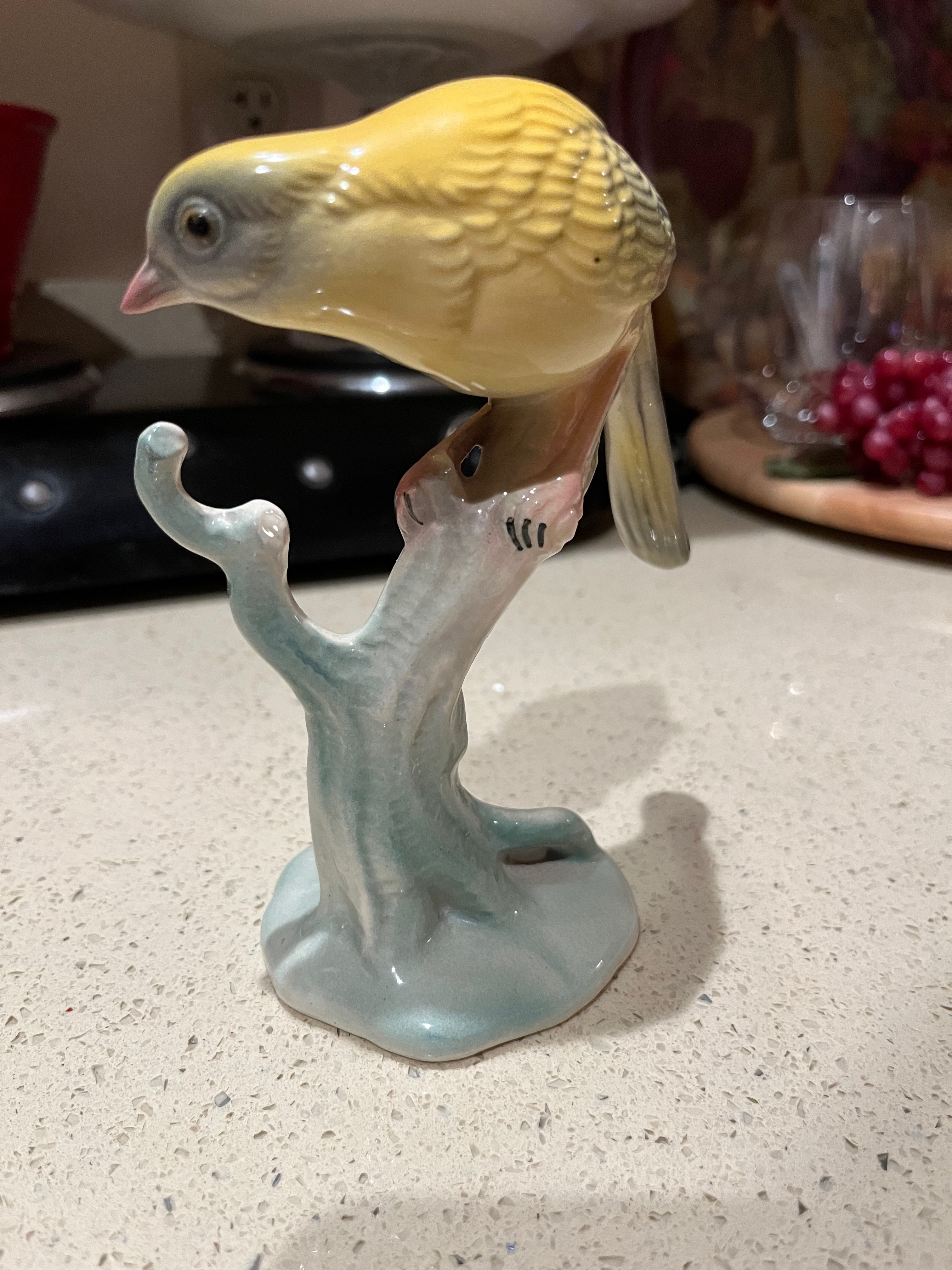How to Correctly Identify a Brad Keeler Piece
On weekends, my husband and I often find ourselves near antiques shops. When we do, we scour the glass cases and open shelves for anything that could have been produced by my grandfather, Brad Keeler. We've had some lucky finds: flamingos, a rooster platter, and most recently a covered serving dish from the fish service line.
It does seem that authentic pieces are becoming harder and harder to find, likely due to the limited production because of my grandfather's short lifespan. As of this writing, on January 24, 2023, there are 147 Brad Keeler listings on eBay.
A quick scan of them tells me that most of them are authentic. Most, but not all.
Whether unscrupulous or simply uninformed, some sellers attribute the Brad Keeler name to pieces that, to a novice, bear a resemblance to something made by him, but when you know what to look for, it becomes clear that either a piece is a knockoff or it's just plain not his. I'm going to give you two real-world examples, and a couple of things to look for.
1) Lobsterware
Three lobster platters with lettuce-green leaves. One is real. Can you tell which is which at a glance?



All three of these came up under a search for Brad Keeler on eBay. Things to look for: Note the colors of the glaze, the detail on both the leaves and the lobsters, and always look for a makers' mark.
Keeler was famous for his "Ming Dragon's Blood" true red glaze, an innovation at the time. Which of those lobsters appears to have the truest red? And while there is some variation with the greens in different buffet service lines, none of them are quite that vivid a green.
Another distinctive feature is the shape of the lobster. You will typically see more artistic detail. The leaves, too, have a distinctive look to them. They draw the eye inward toward the body of the lobster. Visually, they do not compete with the lobster for the viewer's attention; rather, they are the canvas on which the lobster is artistically placed.
Lastly, always look for a maker's mark. There are rare exceptions, but the lobsterware line will typically have a stamp with or without a number on its backside, and possibly even a sticker. (Stickers are rarer because they fall off over time.) Other things to look for: The tell-tale crazing, e.g. hairline cracks in the glaze. If there are no cracks in the glaze, it is definitely not authentic.
2) Figural birds
As is with most of Brad Keeler's work, the more detailed the work, the more likely it is to be an authentic Brad Keeler Artwares piece. My grandfather, like his father before him, was a gifted artist and modeler. Again, with a discerning eye, one can pretty easily see the difference between a Keeler bird and a non-Keeler bird.
This past weekend, my husband and I found ourselves in the vicinity of the same antique store where we have had good luck in the past, Victoria's Attic.
Victoria's Attic is a sprawling antique mall in the Coachella Valley, famous for a mid-century modern aesthetic. A good place to find tchotchkes from my grandfather's era. In the same case where I found the beautiful fish service dish, I spotted a bird. It was/is labeled Brad Keeler, but looking at it through the glass I was 90% certain that it absolutely wasn't. Still, I asked them to open the case so I could inspect it.
Here is the bird, next to an authentic piece for reference, on the right, one from my mom's collection that I took a photo of yesterday in her kitchen.


The first thing I want to you notice is where the eye goes when you look at these. Like any good artistic composition, the eye is drawn to a focal point, then moves around the piece finally landing back on the focal point.
The piece on the left is kind of a hodge-podge. The eye doesn't know where to go. All of the elements are in competition with one another so it's sort of hard to look at. Look at the branch that the bird is perched on. It's heavy, and the decoration on both the bird and the branch is sloppy. And the color of the branch overpowers the color of the bird.
Now look at the piece on the right. Where does your eye go first? Yes, to the bird. Note the detail on the wing, little scallops like feathers. The tail is delicate. The glaze colors do not compete and instead complement each other. Also, note the birds' eyes: the one on left has a little splotch of paint for an eye; the one on the right has a detailed eye, and if you look closely, you can see there is tiny wedge of white representing where the light is glinting. [Note: My photo is too low-res to see this, but click here and zoom in on this one on eBay--note the tiny "pie slice" of white.] This is a characteristic feature of Keeler birds and most if not all of the figural work. There is also the characteristic crazing to look for.
Once you know what to look for, it's not hard to identify an authentic piece. So how is it that this antiques dealer has his bird marked as Brad Keeler? I checked the base and there is no signature, which is how the typical birds are identified--a signature etched into the un-fired clay itself.
I offer you this piece of advice: Just because something is identified by a dealer as an authentic Keeler piece, or it says "Brad Keeler" in the description, does not mean that it is. Don't be fooled by imposters or unscrupulous or simply ill-informed dealers. Had the dealer been on-hand at the store on Sunday, I would have given them this quick tutorial.
Alas, I just hope that other dealers who are looking to the internet for identification might happen upon my blog. To anyone out there reading this, I am always happy to look at pictures and give you my assessment--which is not to say that I know everything, but what I know, I'm happy to share.
 Catherine Porter
Catherine Porter
Reader Comments